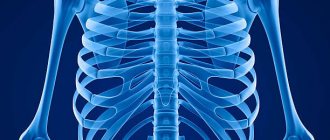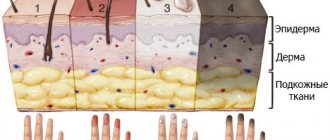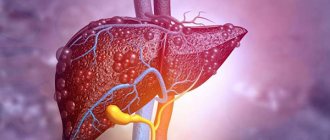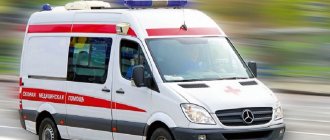Injuries to the ankle and ankle area account for the lion's share of all injuries to the musculoskeletal system. The share of ligament tears in the structure of sports injuries can reach up to 40%. Bruising, damage to the ligaments and bones of the joint can be caused by muscle imbalance, defects in shoes or coverings, changes in the nervous system, or simple inattention. Depending on the extent of damage, the prognosis for recovery can vary dramatically. To understand the principles of care for ankle injuries, it is worth understanding the types of injuries.
Injury
A common bruise is the result of a foot hitting a hard object. In this case, as a rule, serious destruction of body tissues is not observed. Bruises of the lower leg and ankles are very painful, since the bones in this area are devoid of protective fatty cover. Recovery from a minor injury is often quick. Extensive damage can cause massive swelling, hematomas, or even injuries to blood vessels and nerves. However, more often than not, a “regular” bruise will involve only moderate pain and minor swelling.
Causes
The injury usually occurs when falling on an outstretched arm. If a person stumbles or falls into ice, then the probability of damage to the beam is very high. This injury often occurs in childhood or in people who play sports, which is associated with high mobility and a high incidence of falls. It may also occur in the event of an accident or at work.
In older people, the cause of the damage is osteoporosis. Even a minor impact causes a fracture.
Tears and ruptures of ligaments
Tears and ruptures of the ankle ligaments are the most extensive group of injuries. In a typical direction of “rolling” the foot, 1, 2 or 3 lateral ligaments are injured. It is worth noting that the ligaments are characterized by low elasticity. When overloaded, they do not stretch, but break completely or partially. The rupture is accompanied by pain, swelling, and sometimes a crunching or crackling sound. In the future, the ligaments may grow together or lose their tension. Small partial tears with the right approach have a very favorable prognosis. Complete tears of multiple ligaments often lead to chronic instability and re-injury.
Sprain or fracture, how to determine
A sprain is a ligament injury characterized by tearing of the fibers. Most often, ligaments are damaged in the area of the middle joints of the limbs. This injury is characterized by a clear clinical picture consisting of the following symptoms:
- pain syndrome, the severity of which depends on the severity of the injury. The pain can be so intense that it leads to traumatic shock and loss of consciousness;
- swelling and hematoma. The intensity depends on the severity of vascular damage. Thus, with severe damage to the ankle ligaments, the leg can sometimes more than double in volume;
- loss of mobility. It may be almost complete, as in a fracture, or almost insignificant.
Important: a third-degree sprain can often be accompanied by an avulsion fracture, in which the ligaments tear off the bone and take a small fragment of it with it.
Mild sprains are easy to distinguish from a fracture and usually do not require special medical attention. More serious degrees of injury differ in the nature of the pain syndrome: pain when the ligaments are torn is acutely manifested at the moment of movement or palpation. With a fracture, it is always strong, does not weaken over time, and an acute reaction to palpation is also observed.
A good way to tell the difference between a sprain and a fracture is to apply ice to the injured area. For sprains of any severity, cold compresses help well: they reduce inflammation and muffle pain, causing numbness in the nerve endings that transmit a signal about the injury. Cold is especially useful for second- and third-degree sprains, since the inflammatory process with such injuries tends to intensify. Cold compresses should be applied for 10-15 minutes every 1-2 hours throughout the day. For a fracture, a cold compress may slightly dull the pain, but will not relieve inflammation. In addition, the pain syndrome will gradually begin to intensify.
For any sprains, if the ligaments have not been torn from the bone, the patient’s condition improves after a few days, by limiting the load on the injury site and applying compresses. If the condition does not change or worsens, you need to seek medical help and take an x-ray to confirm the diagnosis: most likely, it has a fracture, crack, or the ligaments have been torn from the bone.
Fractures
Even a small fracture is a potentially serious injury that requires special treatment. The most common types of ankle fractures are:
- isolated fracture of the lateral malleolus,
- bimalleolar fracture,
- bimalleolar fracture with a fracture of the posterior edge of the tibia,
- fracture of the lower third of the leg bones.
To determine the prognosis and treatment tactics, the degree of displacement of fragments and the location of the zone of bone destruction are of great importance. There are fractures without displacement - “cracks” of the bone, and complex injuries with displacement of fragments. Severe fractures can be complicated by ruptures of blood vessels, nerves and ligaments. The outcome largely depends on the correct provision of first and specialized aid, adequate and complete rehabilitation.
Preventing Ankle Injuries
Causes of ankle injuries can include:
- falling from a height,
- traffic accidents,
- industrial accidents
- simple carelessness or carelessness,
- muscle imbalance.
Despite the certain influence of factors beyond our control, the largest percentage of fractures and ruptures of ankle ligaments is associated only with chronic overload and muscle imbalance. Most patients with fractures and severe ruptures recall that before this their foot had already “twisted” several times - the muscles seemed to turn off. Timely restoration of the balance of the muscles of the lower leg and foot is the basis for the prevention of ligament ruptures and ankle fractures. To strengthen the muscular-ligamentous apparatus of the legs, the so-called balance training has proven itself to be excellent. The technique is actively used in sports medicine for training and rehabilitation of football players, gymnasts, and speed skaters. You can carry out balance training at home on a special balancing pillow.
Working with the correct certified balance pillow after just a few minutes gives a feeling of stability, pleasant exercise and massage of the foot and lower leg. Regular exercise leads to stronger ankles and improved balance throughout the body. Very often, various foot deformities lead to ligament rupture. Excessive pronation or supination, heel valgus or varus are corrected with custom orthotics. These products directly correct musculoskeletal imbalances and improve circulation and perception of the foot and ankle area.
How to tell the difference?
It is clear that an open fracture is immediately visible - by the bones protruding from the wound. Difficulties arise when determining a closed fracture, especially if the bone fragments have not moved.
The pain from the bruise gradually subsides, and after a couple of hours relief comes. If you put ice on the injured area, the swelling will go down.
With a fracture, the swelling does not subside, and the pain does not decrease and may even intensify.
If an arm or leg is broken, then it is impossible to lean on the damaged limb; if a finger is damaged, then there is no way to bend it. If you bruise your foot, you can walk, although with severe pain. If the foot is broken, it is impossible to take a step.
A broken rib makes itself felt by pain with any movement of the body, coughing and even inhaling.
If the fracture is displaced and the bone fragment is located close to the skin, then it may protrude under the skin in the form of a bulge that is painful when touched. A broken arm (leg) is hanging or unnaturally bent. Pathological bone mobility may be observed at the site of injury. If the bruise is severe, the muscles are torn, the limb may also not function, it cannot be bent
A fracture can be identified using axial load syndrome. The injured person is asked to try to lean on the sore arm, transfer the body weight to the sore leg, clench a fist and knock on it, that is, apply force to the injured bone in the longitudinal direction. If there is a fracture, it will cause severe pain, but if it is a bruise, then there will be no pain.
This is due to the fact that during a fracture the periosteum is damaged, and it contains a large number of nerve receptors. They cause pain.
First aid for an ankle injury
For any injuries, immediately consult a doctor who can accurately diagnose and recommend effective treatment. For bruises and small tears of ligaments, the RICE protocol has proven itself:
R (rest): stop stepping on your foot and give it complete rest.
I (ice – ice, cold): for the first few days it is useful to apply a bottle of ice or a cold accumulator to the damaged area. This should be done for 10-20 minutes every 2-3 hours. A small layer of tissue should separate the cold object from the skin to prevent frostbite.
C (compression): to prevent swelling during the day, you can wrap your foot and lower leg with an elastic bandage (not tight!). Compression socks are even better.
E (elevation - elevated position): for the first few days, lie down more, placing your leg on pillows to give it a slightly elevated position. This way it will swell and hurt less. Serious ruptures and fractures require immediate fixation of the limb; sometimes surgery may be used.
Modern solutions for treatment and rehabilitation
Special orthoses can help treat typical bruises and ligament tears. Ankle braces significantly reduce pain and swelling, speed up healing and allow you to return to active life earlier. At Medtekhnika Orthosalon stores, experienced consultants will help you choose the best orthosis for your case. Depending on the indications, modern clamps in our network can perform:
- gentle compression for a noticeable reduction in pain and swelling,
- delicate support to stimulate your own muscles and receptors,
- moderate fixation for rapid healing of ligaments and maintaining mobility,
- rigid fixation to stabilize severe damage.
If postoperative fixation is necessary, convenient and comfortable splints are always available. Modern plastic splints are lighter than outdated plaster casts; they allow active movement and hygienic treatment of the skin, changing the angle and degree of fixation. It is important to understand that even after successful healing, the damaged area remains quite vulnerable. Patients after fractures, tears and ligament ruptures during periods of increased stress should be “insured” with the help of lightweight and modern orthoses. This way you will be able to lead a healthy and active life without fear.
Author of the article: Eduard Svitich - orthopedic traumatologist
How does a fracture differ from a crack?
This type of injury has practically no specific signs or differences, so it is very difficult to determine it without the help of a doctor - they are often confused with bruises and fractures. The difference is that when a crack occurs, bone tissue is damaged, but it does not form fragments and does not move away from its main part. The crack can manifest itself in the form of noticeable swelling and pain when trying to move, which over time not only does not subside, but also intensifies.
Bone tissue injury occurs due to external mechanical influence, for example, a blow or a fall, while its strength is inferior to the load force. You can understand whether it is a fracture or a crack by whether the supporting function of the bone is preserved: if there is a crack in the limb, it will still be possible to lean on it, but if there is a fracture, it will not.
When a crack occurs, severe pain occurs, which intensifies with any movement or attempt to palpate the site of injury. At rest, it may be muffled, dull, tingling or pulsating. It appears due to damage to the periosteum, which contains many receptors that signal that the bone is broken.
The second symptom is swelling in the area of injury. Most often, it gradually increases, but can go away within a day with first aid. Restricted mobility, bruising and hematomas are also observed, but may be less pronounced than with a fracture.
Important: a crack can be treated much easier and faster than a fracture. The prognosis for this injury is more favorable, and the period of rehabilitation and restoration of mobility takes less time and requires less effort.
Treatment options
Conservative therapy and surgical intervention are used. They resort to correction less often. If the fracture is without complications, conservative treatment is recommended. The patient is prescribed medications to relieve pain, is prescribed to wear a corset and adhere to the regimen.
If the fracture is unstable, accompanied by compression of the nerve endings, or the spinal cord is affected, surgery is prescribed. Implants may be required to stabilize the spinal column.
Conservative method
The therapy is suitable in cases where the spinal cord is not affected. The doctor prescribes bed rest for a period of up to 3 months. If the injury is in the neck area, a special collar is prescribed, after which, for six months, you need to wear a corset to fix the bones.
The method includes exercise therapy classes with a strictly standardized load. At first it is only breathing exercises, then arm exercises are introduced, the load and time of exercise are increased gradually.
Surgical intervention
Surgeries are prescribed if the cerebrospinal fluid is damaged due to a fracture of the spine, severe subluxation of the vertebrae is detected, when there is a risk of damage to the brain matter by a vertebral fragment. The surgeon’s actions are aimed at releasing the spinal cord from pressure and protecting it, stabilizing the column. Next, conservative therapy is prescribed.










